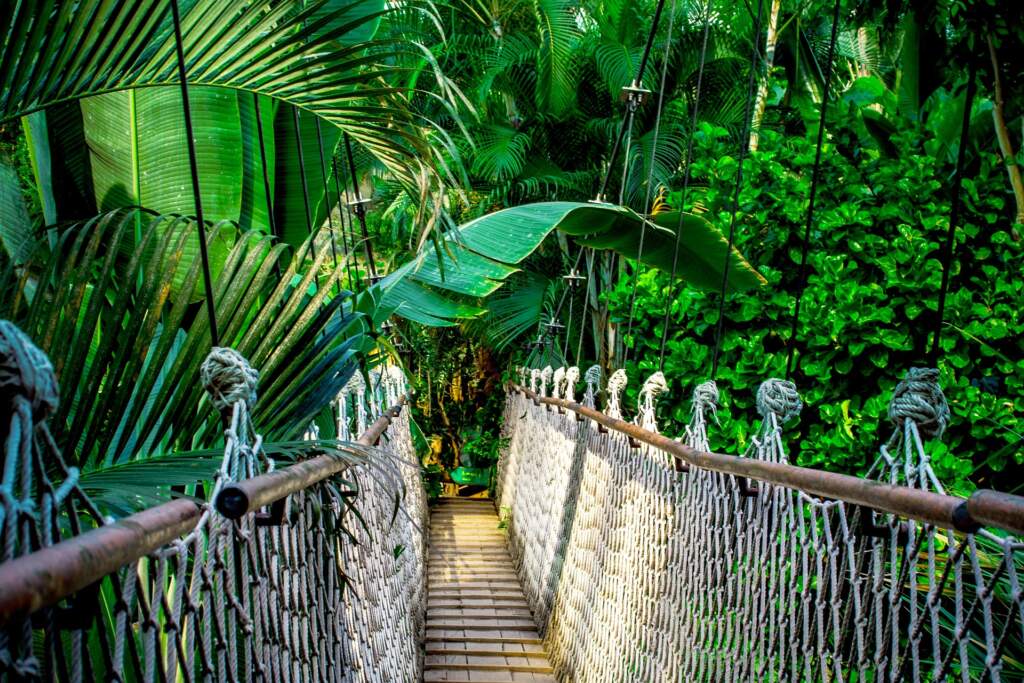
The South American Rainforest is also known famously as the Amazon. The rainforest expands on over 634 million hectares and is home to diverse flora and fauna. There are more animals and plants here than anywhere else in the world. Roughly there are more than 80,000 species of plants.
These spectacular plants are a miracle of nature and a heaven for all plant lovers. If you are interested in learning more about plants in the Amazon, here are some unique plants you can find in that region.
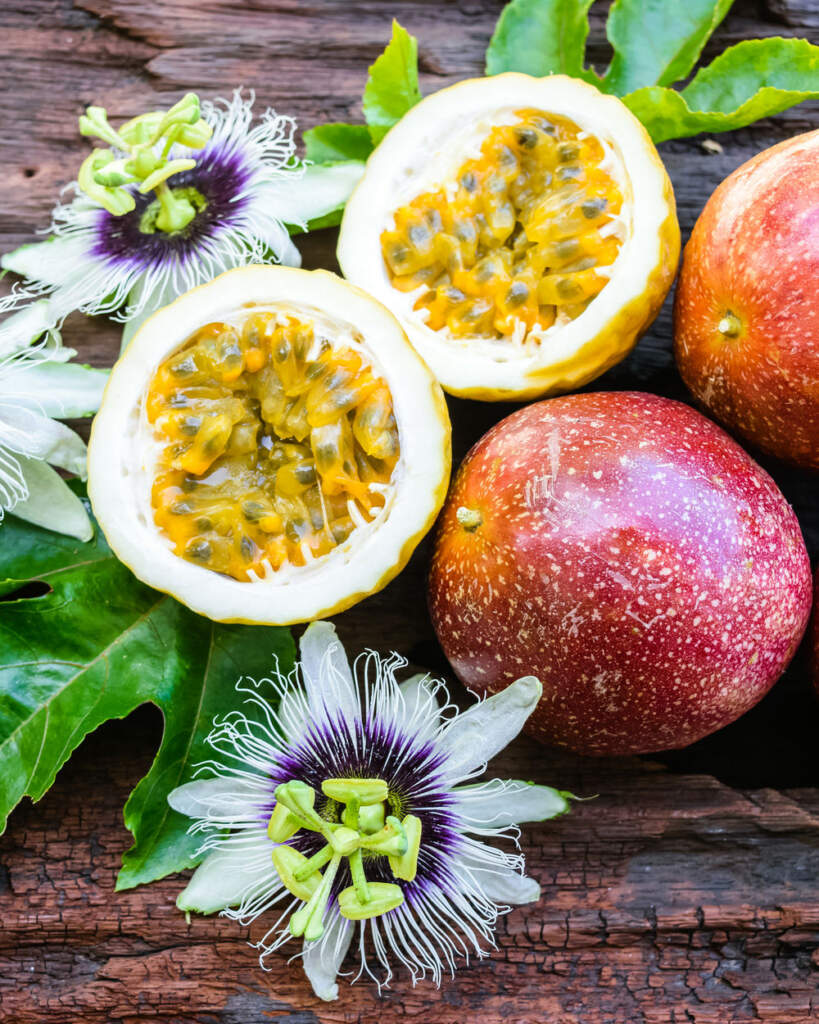
Passion Fruit Vine, Passiflora ‘Panama Red’
Passion Flower
The Passion Flower belongs to the Passifloraceae family and comes from the passion plant. This flowering plant also produces fruits, and you may have heard about different dishes and delicacies made with the fruit in Amazonian cuisine.
The Passion Flower has a distinct shape, and the flow resembles thorns. These flowers can be found in shrubs, woody vines, and even at the top of the forest canopy. The flowers usually come in white, red, and purple that stick out in the greenery.
Sun is very important for the plant, so it can cling to any tree or vine to reach the top of the canopy to get the maximum sunlight. But it does not prefer direct heat; it becomes unbearable, and the plant will move towards an area with more shade.
Besides its fruit, the Passion Flower is also used for medicinal purposes such as pain relief.
Lobster Claw Heliconia
Scientific Name: Heliconia rostrata
Common Names: Lobster Claw Heliconia
Overview: The Lobster Claw Heliconia showcases its unique claw-like flowers in vibrant hues of orange to red to yellow. A favorite of hummingbirds, this plant is sometimes mistaken for a Bird of Paradise. It’s also sometimes called the Parrot Flower, with tiny flowers covered by showy bracts.
When you’re thinking about the right spot to plant it, make sure to allow adequate space. This Heliconia loves to spread, and can grow up to 6 ft. tall. The Lobster Claw does well in full sun or partial shade. They thrive in well drained, slightly acidic soil that stays constantly moist. As you might expect of a tropical plant, preferred growing conditions are humid and warm. Heliconias need regular attention – food and water – to keep their optimum appearance. They can thrive indoors, provided the humidity levels are right.
Heliconia
This plant has a unique name: Lobster Claw. It is one of the most colorful plants in the Amazon, and you can find it commonly throughout the rainforest. The shape of the leaves gives it its name Lobster Claw and is bright in color, so the plant is very distinct.
The plant can grow up to 15 ft, while the leaves are up to 10 ft in size. To grow to their full potential, these plants require humidity and a warmer climate which is why they are commonly found in the Amazon. However, because of its unique shape and color, the plant is now common in homes across the globe. They are being kept as ornamental plants.
Heliconia is a direct source for hummingbirds to get food and nestle. Moreover, the Heliconia depends on hummingbirds in return for pollination.
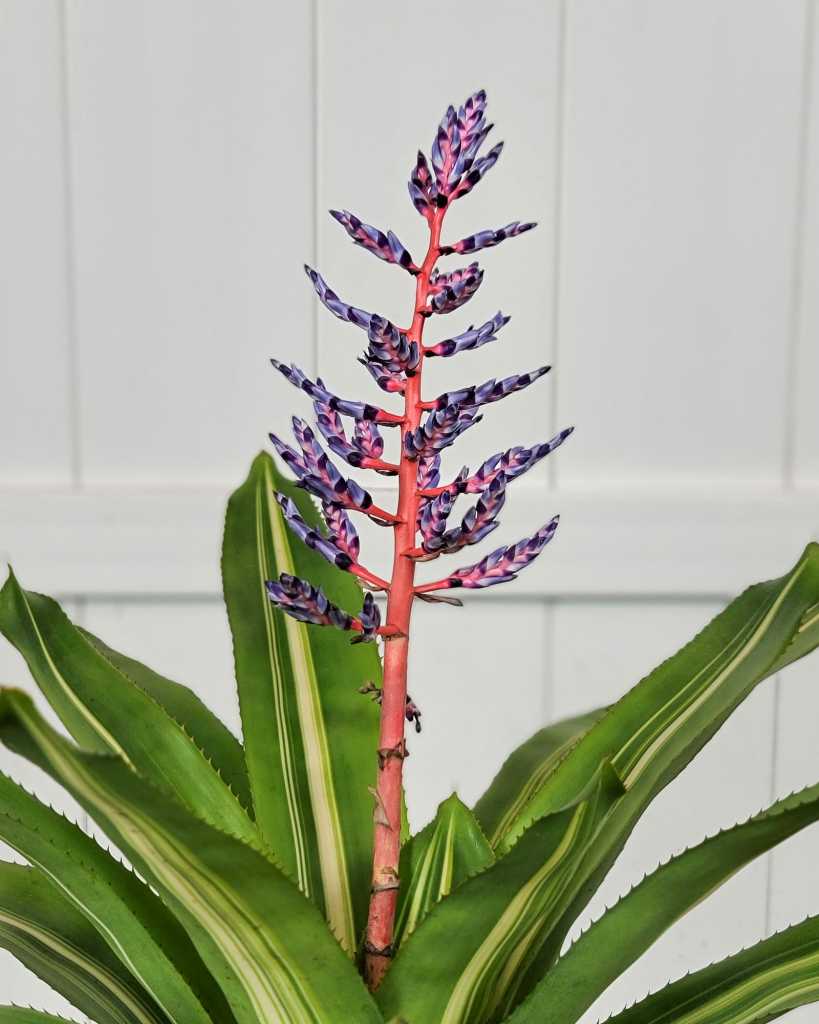
Aechmea ‘Del Cielo’, Bromeliad
Bromeliad
If you are a fan of unique plants, you will be impressed with Bromeliads. These plants are beautiful and can be found in different bright colors, such as red, orange, and blue. The Bromeliad acts as epiphytes, and they can grow in different locations. You can find them on the branch of a tree or the ground and, surprisingly, on rocks too.
The plant has thick leaves, which collect water, providing nestling space for insects and small animals such as tadpoles. Besides shelter, the plant is also a water source for many animals. The plant stores water by adapting its leaves to curl up and make a pocket of water. The plant can hold up to 7.5 liters of water.
Bromeliads are not just flowering plants but also produce fruit, which you may have eaten at least once: pineapple.
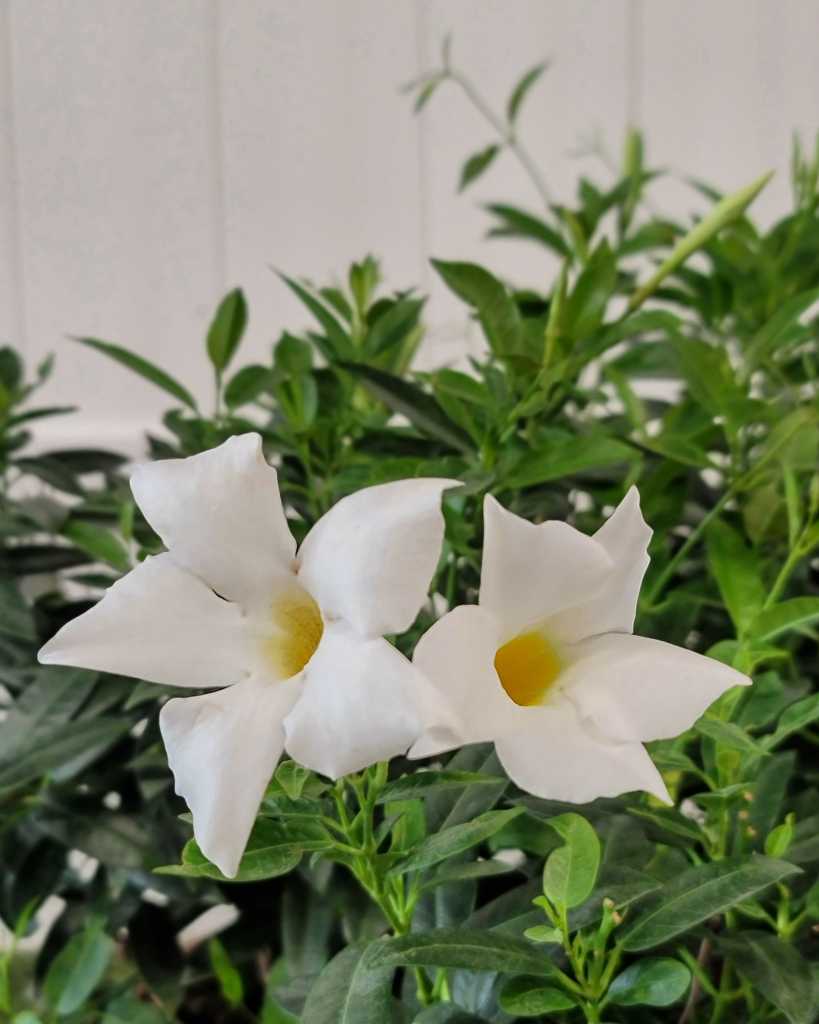
White Dipladenia
Scientific Name: Dipladenia spp.
Common Names: White Dipladenia, White Rock Trumpet, Brazilian Jasmine
Overview: The White Dipladenia is an excellent choice if you want distinctive flowers that can be grown easily on outdoor walls or indoors with a trellis that allows the wandering vines to climb up. Also known as the Rock Trumpet or Mandevilla vine, the Dipladenia is native to South American rainforests so it prefers hot and humid conditions but if successfully kept outside, it will become an immediate favorite for hummingbirds and pollinating insects.
White Dipladenia
The White Dipladenia is a flowering plant that produces flowers of different colors, such as white, red, and pink. This plant thrives under shade, making the Amazon a great place for the plant. If you want to grow the Dipladenia at home, you can either let it trail on the wall or rails, or you can also keep then on in a container.
Pollinating insects and birds such as the hummingbird are attracted to this plant, and the best part about it is that it does not require much care. Even though it is a flowering plant, it does not require a lot of water; you just need to ensure that the soil is moist and does not dry out completely.
If you take good care of the plant, its flowers will continue to bloom throughout the year. This makes it a good choice for a plant to keep at home if you want to improve its aesthetic appeal.
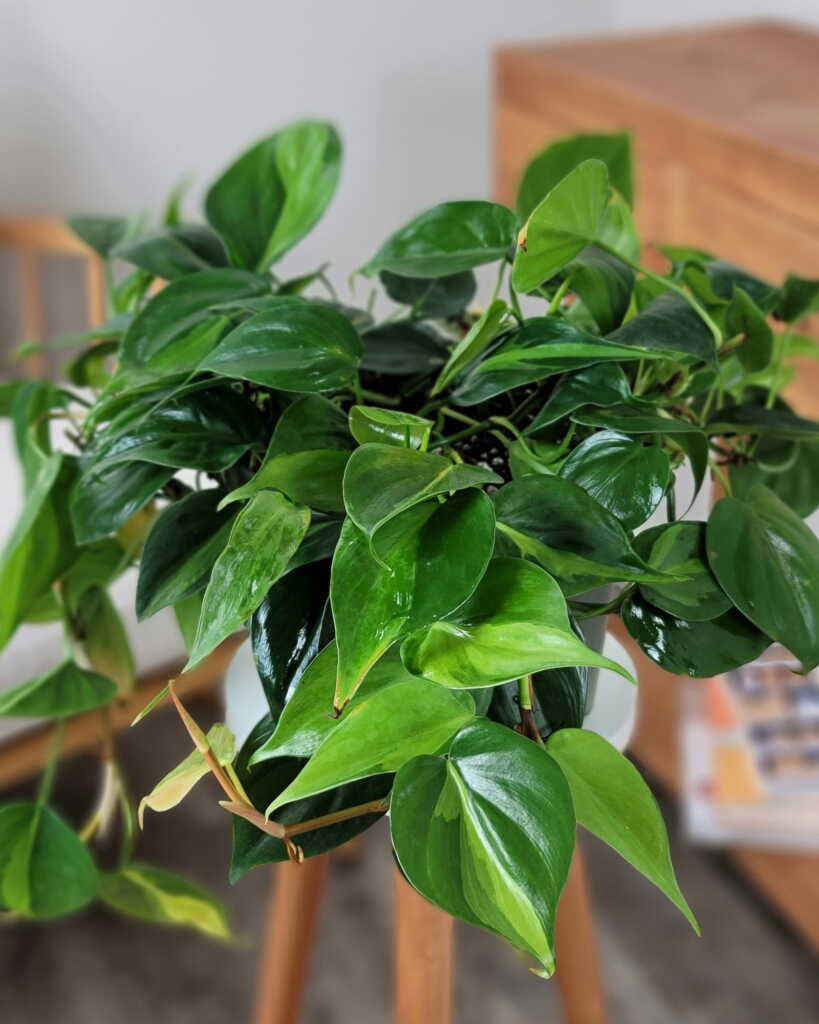
Philodendron Brasil
Scientific Names: Philodendron ‘Brasil’, Philodendron ‘Brazil’
Common Names: Heartleaf Philodendron, Brazilian Philodendron
Overview: With distinctive heart-shaped leaves that incorporate dark green and light lime green colors, the philodendron brasil is a popular choice for those who are looking for a little variety in their houseplant collection. This species is native to the rainforests of South America but has adapted well to indoor environments that can provide plenty of bright but indirect sunlight.
Philodendron Brasil
Philodendron Brasil is native to the South American rainforests in Brazil and gets its name from the colors on the Brazilian flag. The plant’s foliage features lime green and dark green colors, making for a beautiful combination. The leaves are heart-shaped, which adds to the beauty of the plant.
You can easily grow the Philodendron Brasil at home, as these plants are easy to care for. They need bright light, but it is best if you do not keep them under direct sunlight, as that can cause the leaves to burn. When you want to water the plant, check the soil and only water it if it is 50% dry.
It is important to note that the Philodendron Brasil can be toxic to pets and humans, so if you want to keep it at home, you must keep it away from the reach of your pets and children.
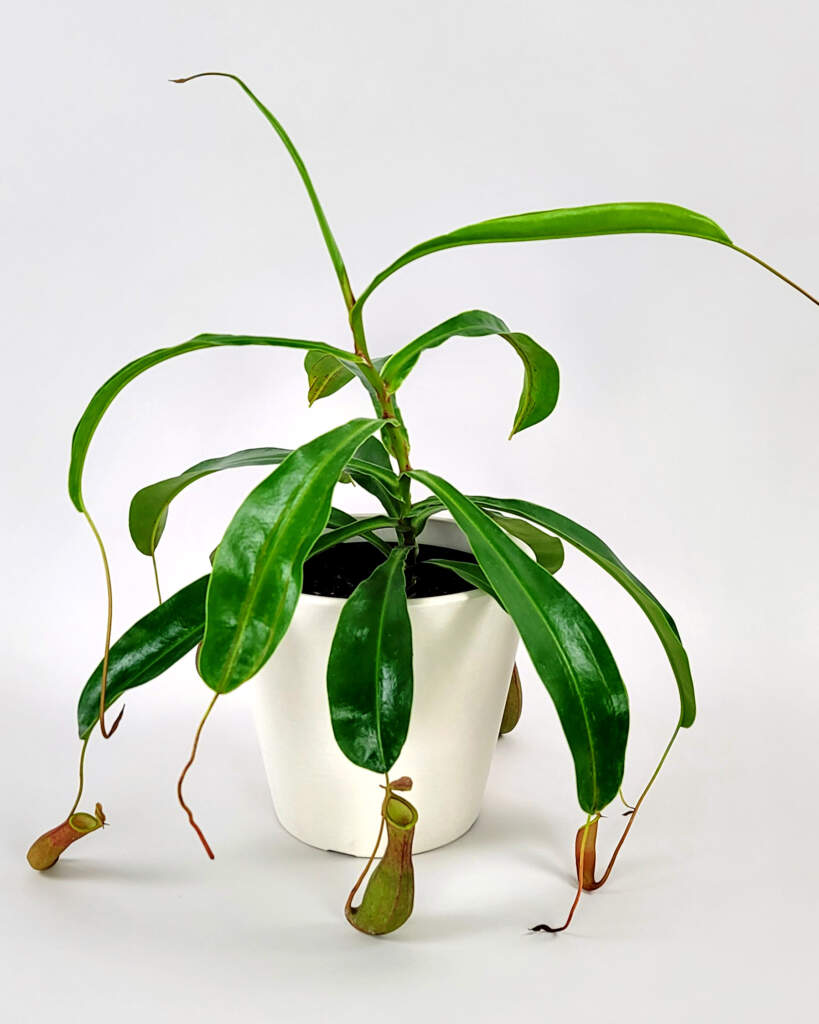
Tropical Pitcher Plant
Scientific Name: Nepenthes
Common Names: Tropical Pitcher Plant, Monkey’s Cup
Overview: It may come as a shock to many plant owners, but the Nepenthes can be male or female. This is why they cannot self-pollinate. If you are thinking about growing a Tropical Pitcher, then it is a good idea, as the plant is a great addition to any space. All you need to do is make sure you follow the instructions properly!
- Plant ships in grower pot.
Pitcher Plant
One of the most unique plants includes the pitcher plant, and the unique quality of this plant is that it is a carnivore. This means the plant traps insects in its pitcher-shaped foliage and feeds on them.
The Pitcher Plant has a liquid in its belly, and insects are attracted to the sweet liquid, luring them into the plant. Once the insect enters the plant, it cannot leave, and the plant will work on digesting it.
It is also called ‘Monkey cups’ as monkeys are often seen drinking from the cups. If these plants are kept in the right environment with ample sunlight, they will grow to their full potential.
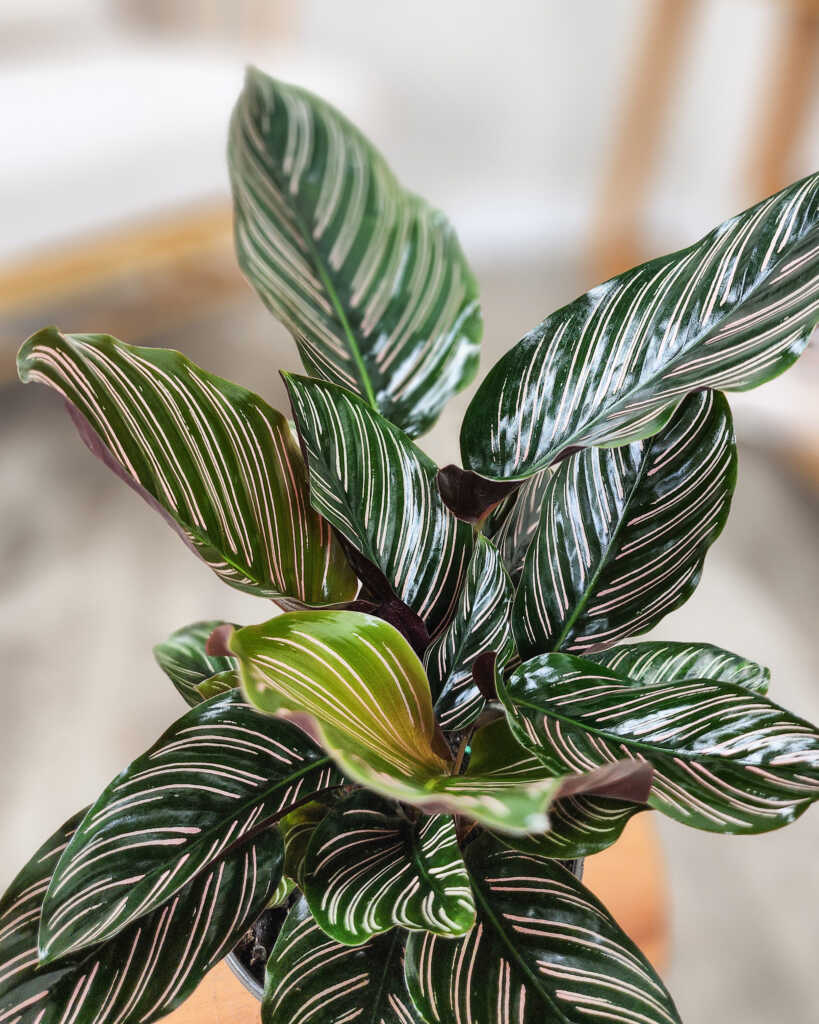
Pinstripe Calathea
Scientific Name: Calathea Ornata ‘Pinstripe’
Common Names: Pinstripe Calathea, Pinstripe Prayer Plant
Overview: Like all prayer plants, the Calathea Ornata is known for its remarkable foliage. Its dark green glossy leaves are accented with pink pinstripes and a reddish purple underside. Though the Pin Stripe is not without some care requirements, it pays you back amply in beautiful color.
- Click here for care instructions.
- This item ships in a grower pot.
Pinstripe Calathea
Pinstripe Calathea is a plant known for its foliage. The leaves of Pinstripe Calathea are dark green and glossy; you can also find pink pinstripe detailing, which makes the leaves pop. Since the plant is native to the Amazon, it requires a humid environment with bright but indirect sunlight to grow. The best spots for this plant are the bathrooms or kitchens, which are highly humid and can give the plant the atmosphere it needs.
This plant is one of the plants that do not require much maintenance. If your home is not humid, you can increase the plant’s humidity by misting its leaves every other day. The plant can grow to 3-4 inches tall if provided with the best atmosphere.
The South American Rainforest is home to several unique plants limited to the tropical climate. But you can grow some of these plants at home as plant owners. The plants mentioned above are some of the best options to keep at home. Make sure that you take good care of the plants you keep, and they will reward you greatly!


